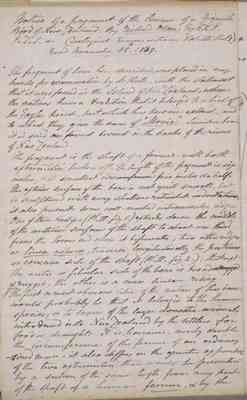Pages
556
48
Cnemiornis, although also with a "ratite" or uncarinate sternum, must stand beside Cereopsis in the Anserine group of Anatidae.
The Didines are but generic modifications of a great natural division of Rasores, the existing members of which, of smaller size, retain their faculty of flight.
Dinornis shows the consequence of disuse of wings in a greater degree than does Apteryx. But although the winged forms from which the Kiwi, the Cassowary, the Emu, the Rhea, the Ostrich and the AEpyornis have severally degenerated remain to be determined, the wingless kinds each have structural characteristics encouraging the quest, and testifying against the artificial group (Megistanes, Vieillot ; Proceri, Illiger ; Ratitae, Merrem : Struthionidae, Vigors) based upon modifications of the breast-bone and scapular arch, the consequences of disuse and degeneration of the muscles of flight, and with which a loose character of plumage is more or less associated.
The results of the researches which have determined the real affinities of extinct birds and keelless breast-bones and long-angled scapulo-coracoids, devoid of acromial and clavicular processes, support a reasonable expectation that the existing wingless genera, which have been shown to differ from one another considerably in important anatomical structure, in correlation with their distinct and remote habitats, will be ultimately referred to as many distinct natural groups which are now, or which formerly have been, represented by volant and typical members of the feathered class.
EXPLANATION OF THE PLATES.
PLATE IV.
Fig. 1. Reduced side view of the skull of the male Solitaire. Fig. 2. Reduced side view of the skeleton of the female Solitaire. Fig. 3. Copy of a figure of the living Solitaire, from the frontispiece to Leguat's work, above cited.
PLATE V.
Fig. 1. Side view of the skull of the male Solitaire. Fig. 2. Top view of the skull of the same. Fig. 3. Occipital surface of the skull of the same. Fig. 4. Top view of the skull of the female Solitiare. Fig. 5. Under view of the skull of the same.
All the figures are of the natural size.
559
Notice of a fragment of the femur of a Gigantic Bird of New Zealand. By richard Owen Esq. F.R.S. F.Z.S. (Zoological Transactions. Vol. II. Part 1.) Read November 12th. 1839.
The fragment of bone here described was placed in my hands for examination by Mr. Rule*, with the statement that it was found in the Island of New Zealand, where the natives have a tradition that it belonged ot a bird of the Eagle kind, but which has become extinct, and to which they give the name of "*Movie". Similar bones it is said are found buried in the banks of the rivers of New Zealand.
The fragment is the shaft of a femur with both extremities broken off. The length of the fragment is six* inches, & its smallest circumference five inches & a half. The exterior surface of the bone is not quite smooth, but is sculptured* with very shallow reticulate indentations; it also presents some well-marked inter..........* ridges. One of those ridges (Pl. III. fig. 1) extends down the middle of the anterior surface of the shaft to about one third from the lower end where it bifurcates : two other ridges ar lineo aspene*, traverse* longitudinally the posterior or concave side of the shaft (Pl. III. fig.2) : ..............* the outer or fibular side of the bone is broad xxxxx & rugges, the other is a ...........*. linear ....................*
The first & most obvious idea of the nature of this bone would probably be that it belongs to the human species, or to one of the larger domestic animals introduced into New Zealand by the settlers for food or draught. It is, however, nearly double the circumference of the femur of an ordinary -.................* : it also differs in the greater expansion of the two extremities than would be presented by a section of the same length from any part of the shaft of a human femur, & by the




